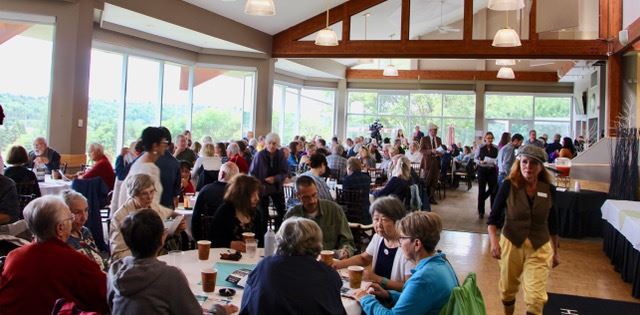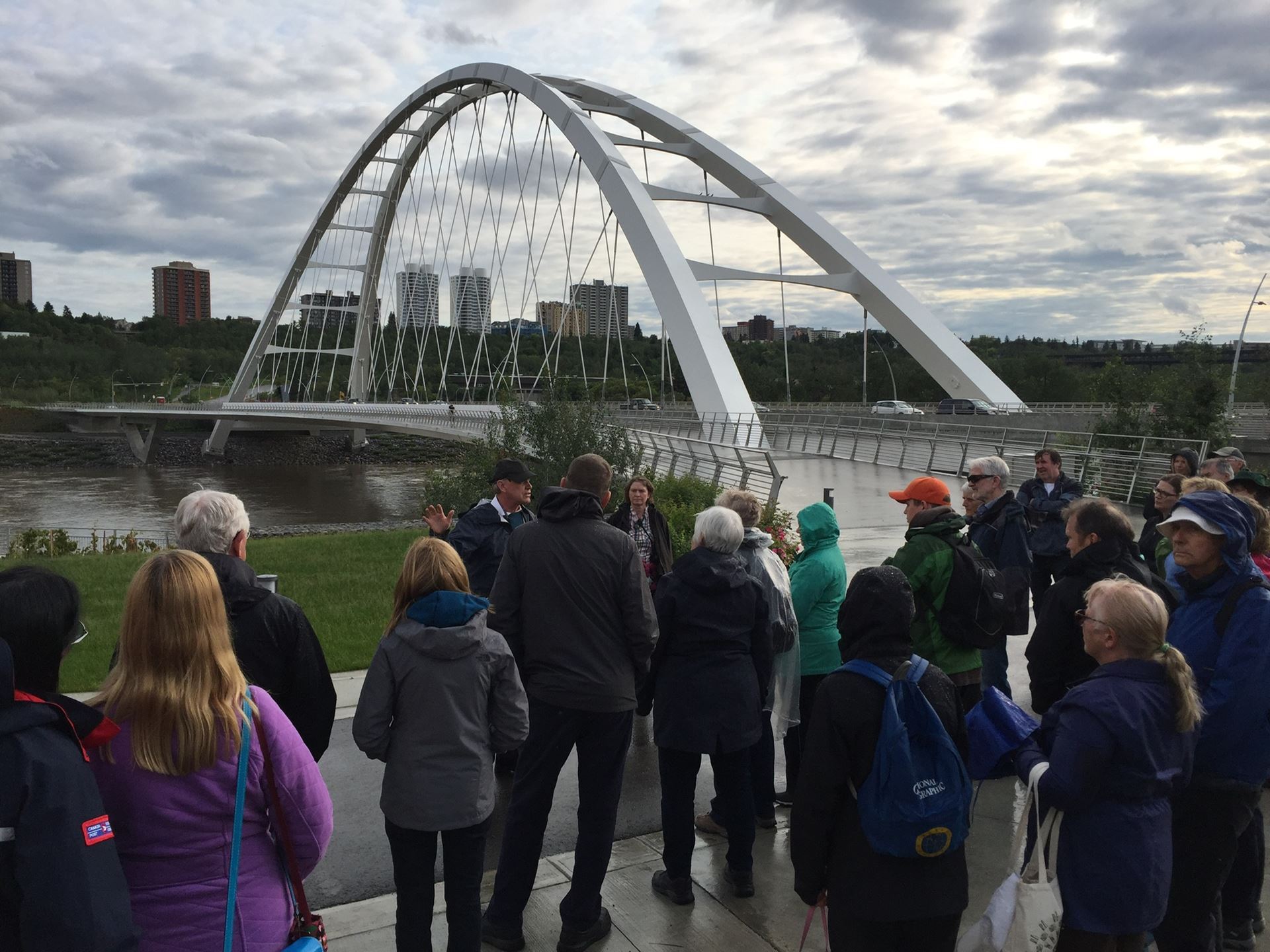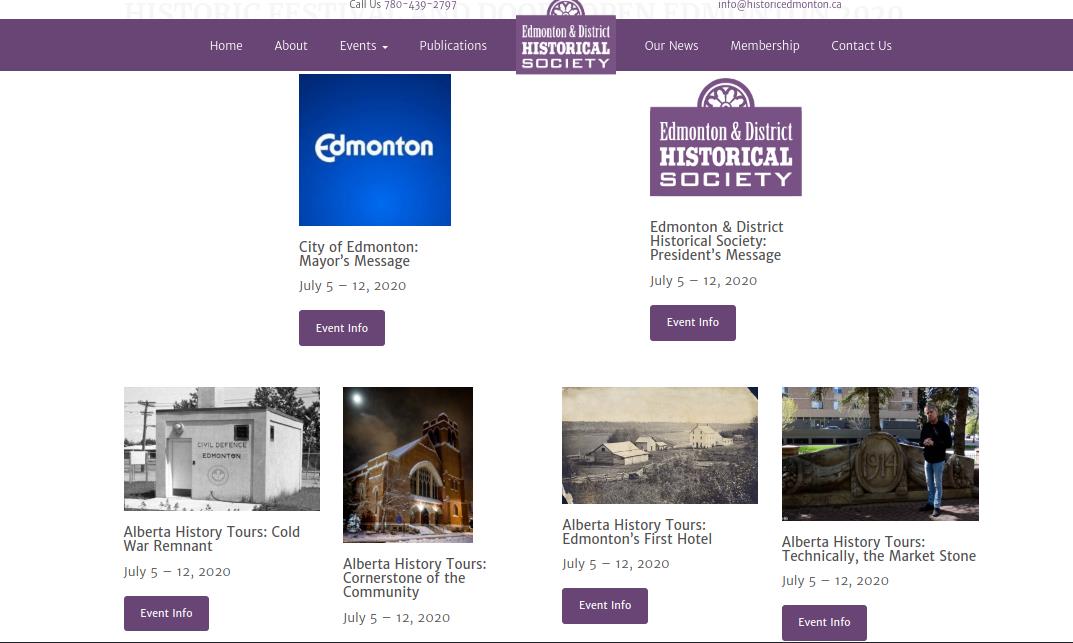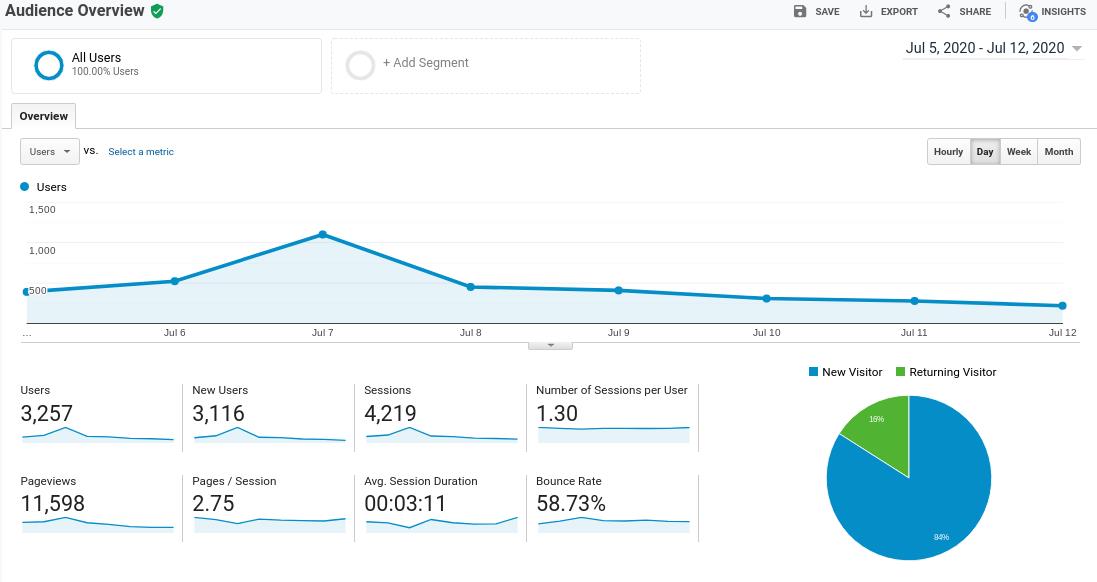By Tim O’Grady
Historic Edmonton and Doors Open Virtual Festival
Welcome to the Festival
The Historic Edmonton and Doors Open Festival is an annual event designed to encourage people to engage with history. The Festival is the flagship event of the Edmonton District Historical Society (EDHS), a volunteer-run non-profit charitable society dedicated to preserving and promoting the history of Edmonton and the surrounding area. EDHS organizes and promotes the Festival, but the programming is put on by partner organizations in the community, including museums, archives, government, non-profits, businesses, and faith organizations.

2018 Festival Launch

Tour during 2019 Festival
Moving Online
Planning for this year’s festival began in January, but by March, with the emergence of Covid-19, EDHS had a big decision to make: do we cancel, do we continue planning and hope for the best, or do we transition to an online event - something that we’d never done before.
Ultimately we decided to move online. We thought it would be a good way to continue supporting our partners, to allow us to continue fulfilling our mandate of providing meaningful opportunities for people to engage with the past, and it would help us maintain a connection to our stakeholders.
The festival ran from July 5-12 on our website.

The Partners
This year we had 24 partners - half of last year’s number. Not all our regular partners were able to participate in an online medium. Some didn’t have the resources (either technical capacity, or just lowered capacity due to the pressures of the pandemic), while a few didn’t foresee a significant return on investment in creating online content.
The Events
There were 38 separate pages of offerings on the website (though some of those pages contained multiple links). Of these, 24 pages featured unique content created specifically for the festival. The production value varied by partner, as some had better equipment and more technical prowess. Mostly tours, these offerings were done in a variety of ways. Many were interpreters speaking on video, interspersed with shots of contemporary scenes and archival images. Some partners made tours using the Google Street View app; 360 degree photographs linked together and augmented by interpretive text, sound, and additional images. This was an option encouraged by EDHS, as the app is free and fairly easy to use. There were also a few slide shows: some had interpretive voiceover, but a couple were of a local cathedral and only had organ music playing in the background. Only two of the offerings were live events: one through Facebook Live, the other through Zoom.
The other 14 pages contained content that was recycled from previous initiatives, such as online exhibitions, inventories of historic places, or interpretive videos that had been done in the past. These were generally larger projects and therefore had a considerable amount more time and money put into them.
Visitor Behaviour
Engagement

Because the online festival is so different from the in person festival, it isn’t possible to compare them. However, EDHS is happy with the number of new users and total page views. The bounce rate (the percentage of users who only looked at one page) of 59% isn’t great, as we had hoped people would explore multiple partner offerings. The average session of 3 minutes could also be better, as in a typical year visitors could expect to spend 30-60 minutes on a tour.
Traffic Acquisition
Direct links = 45%
Social media = 30%
Organic search = 25%
Traffic came through a number of ways, with organic search having the lowest bounce rate (29%). It can be assumed that if someone used a search engine to find the site, they heard about the festival somewhere but didn’t have a direct link. This can likely be attributed to the traditional media we used to promote the event (a promotional package through CTV Television), as well as through subsequent interviews on CKUA Radio and CBC Radio.
Users who came via social media had the highest bounce rate, at 72%. The social media effort done by EDHS included Facebook, Twitter, and Reddit:
|
# of posts/tweets
|
% of total traffic
|
Bounce rate
|
|
Facebook
|
16
|
15%
|
66%
|
|
Twitter
|
12
|
3%
|
51%
|
|
Reddit
|
7
|
12%
|
87%
|
Other than a few dollars promoting the Facebook posts, the social media advertising was free. What was particularly surprising was the interest generated by Reddit. We posted on r/edmonton, which is a subreddit for all things Edmonton. Not only did this result in around 400 site visits, it also generated a media enquiry from CBC radio which led to an interview later in the week. And with 50% of Reddit users under 30, it is a community that is underserved by our organization. That said, the bounce rate was very high among users coming from Reddit (87%), so while we will continue using Reddit, it will have to be one of several tools in our online tool box.
Our takeaway from this analysis is that it is important to advertise in a variety of different ways, but that traditional media is still very important for our audience.
Pages Visited
Surprisingly, despite the recycled content being more polished, the most popular content by far were the tours created specifically for the festival. The most popular tour, with 1,161 visits, was an historical tour of a local fallout shelter. This tour was featured on Reddit and resulted in the CBC interview. The rest of the content averaged about 124 visits each. Although less than the fallout shelter, these numbers are far higher than a typical tour would reach (or be able to accommodate).
Another surprise was the amount of traffic we received to parts of our website that were unrelated to the Festival. Our About Us page, for example, was the 6th most popular page with 279 visits. Our blog, membership page, publications page, and speakers series page were all in the top half for visitorship, and averaged 155 visits each.
Partner Comments
In a short post-Festival survey, two thirds of our partners said they would consider providing an online portion in addition to in person offerings next year. There were numerous comments about the increased accessibility (both from partners and visitors), as well as appreciation that the Festival was done digitally rather than cancelled.
I will quote a particularly lengthy and thoughtful comment:
“I think I would prefer to do only one format: either live or virtual. This is because each event creates its own time demands and as the only volunteer for my organization, it would be a lot for me to do both formats. The virtual format was much more labour intensive for me and with the live event, if I am not able to be in Edmonton during the festival I have to look for and prepare another volunteer. When I do the tours myself, I have to schedule a number of days in addition to the preparation, so both formats can be demanding. With that in mind it would be helpful to know the festival theme a bit earlier in the year, so that it would be easier to prepare (but especially for the virtual format).”
Conclusions
In the face of the Covid-19 pandemic, moving to an online format was a success. With 3,683 people participating in the online festival, EDHS fulfilled its mandate of providing an opportunity for people to explore this area’s history. With 24 partners, we supported our colleagues in the local heritage ecosystem by providing an opportunity to continue connecting with the public in a difficult time. And with a surprising number of people interested in our organization, as evidenced by the page hits to unrelated parts of our website, we’ve managed to stay engaged with our stakeholders - and hopefully found some new ones along the way.
That being said, an online festival is not a replacement for an in person festival. Although more accessible, engagement with partners and visitors wasn’t as high. In the future, we plan to go back to in person events, though we will offer our partners a place to host or promote online content as well should they wish.
Tim O’Grady is passionate about local history and the importance of telling our stories. He has worked in museums, archives, built heritage, and historic sites for nearly 20 years, and has served on several history-related boards. He is currently the President of the Edmonton and District Historical Society. You can email him at timothywogrady@gmail.com.